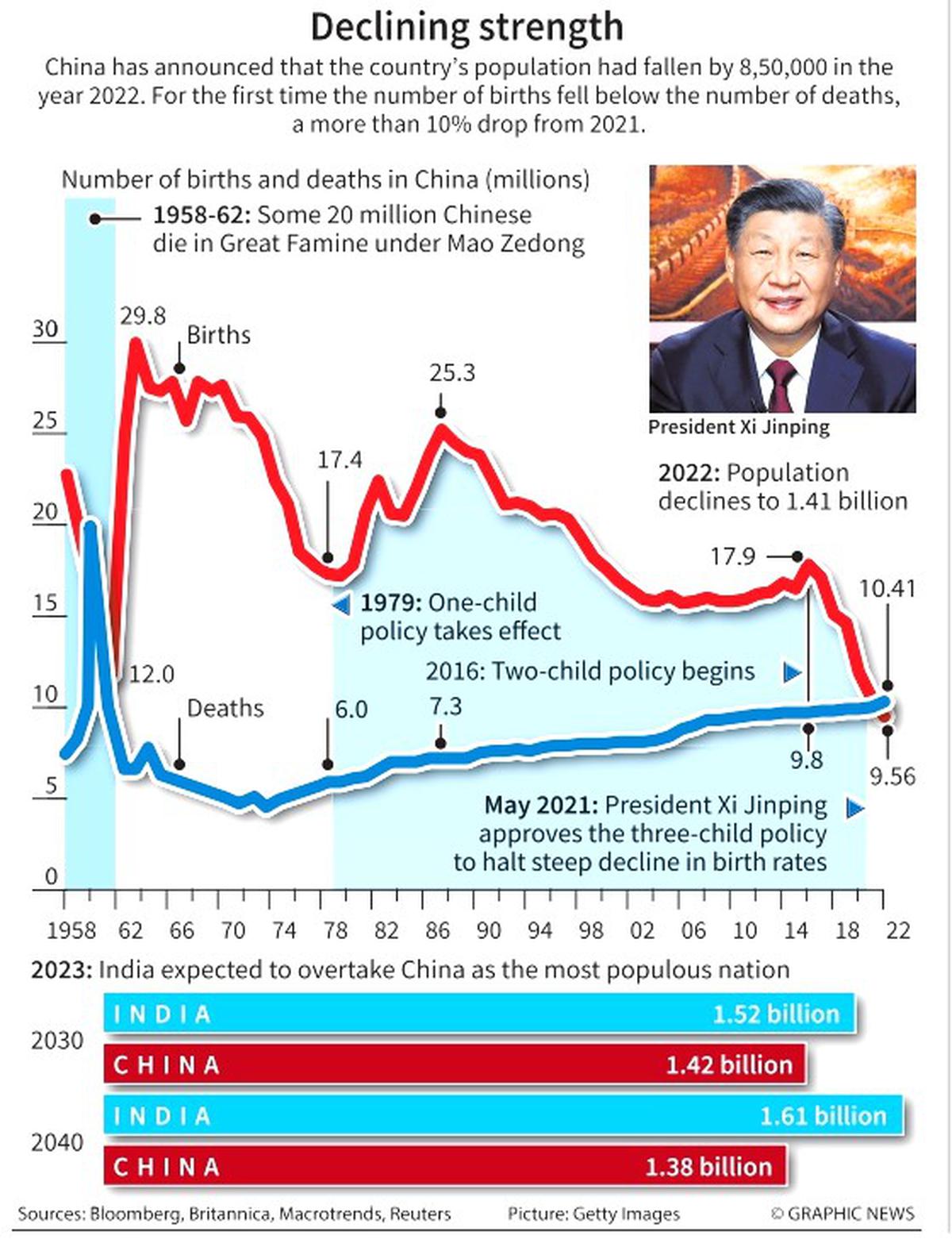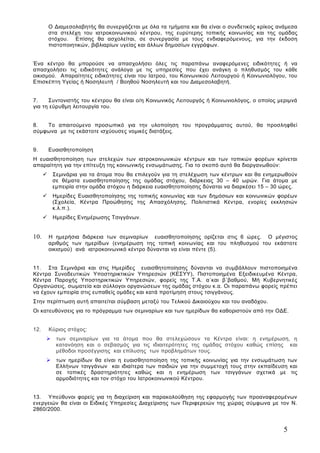The EU's Shrinking Population: Impact Of Policy Tightening

Table of Contents
The Demographic Reality: Understanding the EU Population Decline
The EU is experiencing a multifaceted demographic shift characterized by declining birth rates and increasing life expectancy, resulting in a shrinking working-age population. This trend, if left unchecked, will have far-reaching consequences.
- Declining Birth Rates: Many EU countries are experiencing birth rates significantly below the replacement level (approximately 2.1 children per woman). For example, Italy, Spain, and Portugal consistently register birth rates well below this threshold. This contributes directly to the shrinking working-age population and an increasing proportion of elderly citizens.
- Increasing Life Expectancy: While increased longevity is positive for individual well-being, it places a considerable strain on social security systems and healthcare infrastructure. The rising average life expectancy across the EU means a growing dependency ratio—the proportion of the population aged 65 and over relative to the working-age population.
- Global Comparison: The EU's population decline contrasts sharply with population growth trends in other regions, particularly in Africa and Asia. This demographic disparity has implications for global power dynamics and the EU's competitiveness in the global economy.
- Country-Specific Variations: The impact of EU population decline is not uniform across all member states. Some countries, like Germany and Poland, are experiencing particularly significant population decreases, while others show a slower rate of decline. These geographical disparities necessitate tailored policy responses.
- Geographic Variations within the EU: Even within individual countries, population decline is not evenly distributed. Rural areas often experience more rapid depopulation than urban centers, creating regional imbalances and economic disparities.
Impact of Stricter Immigration Policies on EU Population Growth
Restrictive immigration policies adopted by several EU member states are further contributing to the shrinking population by limiting the inflow of working-age individuals who could otherwise fill labor shortages and boost economic growth.
- Examples of Stricter Policies: Countries like Hungary and Italy have implemented stricter immigration controls, impacting the number of migrants entering the workforce.
- Impact on Population Growth: These policies directly reduce net migration, counteracting any potential increase from natural population change (births minus deaths). This slows or reverses population growth in countries already facing declining birth rates.
- Economic Consequences: Reduced immigration leads to labor shortages in various sectors, hindering economic growth and potentially increasing wage stagnation for lower-skilled workers. The aging population also places increased pressure on existing skilled workers.
- Social Implications: Lower immigration numbers may lead to a less diverse society and affect social cohesion in some communities. However, well-managed immigration can also contribute to cultural enrichment and economic dynamism.
- Solutions for Attracting Skilled Workers: The EU needs to adopt more effective strategies to attract skilled migrants, streamlining visa processes, and offering attractive incentives for professionals in high-demand sectors.
Economic Consequences of an Aging and Shrinking Population
An aging and shrinking population has significant economic ramifications, impacting social security systems, healthcare, and overall economic growth.
- Strain on Pension Systems: A larger elderly population relative to the working-age population places an increased burden on pension systems, requiring higher contributions or benefit reductions to maintain solvency.
- Healthcare Costs: The demand for healthcare services increases with an aging population, leading to rising healthcare costs and potential shortages of healthcare professionals.
- Reduced Economic Productivity: A smaller workforce can negatively affect overall economic productivity and potentially decrease the rate of innovation and technological advancement.
- Implications for Innovation: A shrinking workforce may limit the pool of talent for research and development, potentially slowing innovation and economic competitiveness.
- Economic Reforms: The EU needs to undertake significant economic reforms, including structural adjustments, increased investments in automation, and improved productivity to mitigate the economic consequences of a shrinking population.
Policy Recommendations to Mitigate the EU Population Decline
Addressing the EU population decline requires a multifaceted approach encompassing pro-family policies, immigration reforms, and investments in human capital.
- Pro-Family Policies: Implementing generous parental leave policies, affordable childcare, and financial incentives for having children could encourage higher birth rates.
- Immigration Reforms: The EU needs to review and reform its immigration policies, focusing on attracting skilled migrants and integrating them into the workforce and society. This includes simplifying visa processes and providing support for integration initiatives.
- Investment in Human Capital: Investing in education and training programs to enhance the skills and productivity of the existing workforce is crucial. This is particularly important for the growing number of older workers.
- Supporting Older Workers: Policies to encourage and support older workers in remaining active in the labor force, such as flexible work arrangements and age-friendly workplaces, can contribute to a larger workforce.
- Work-Life Balance: Improving work-life balance initiatives can create a more family-friendly environment, encouraging both higher birth rates and increased workforce participation.
Conclusion
The EU's shrinking population is a complex challenge with profound implications for its future prosperity and stability. Policy tightening in various areas has undeniably contributed to this decline. However, proactive measures are vital. Addressing this demographic shift necessitates a holistic approach, encompassing pro-family policies, comprehensive immigration reforms, and strategic investments in human capital. Failure to act decisively will only exacerbate the problems associated with EU population decline. It's crucial for policymakers and citizens alike to understand the complexities of EU population decline and engage in open dialogue to develop effective and sustainable solutions. Let's work together to address this critical issue and build a more resilient and prosperous future for the European Union.

Featured Posts
-
 Eortasmos Toy Maioy Stis Enories Tis Kastorias Odigos Gia Ton Episkepti
May 19, 2025
Eortasmos Toy Maioy Stis Enories Tis Kastorias Odigos Gia Ton Episkepti
May 19, 2025 -
 Cannes 2025 Kristen Stewarts The Chronology Of Water Celebrated With Standing Ovation
May 19, 2025
Cannes 2025 Kristen Stewarts The Chronology Of Water Celebrated With Standing Ovation
May 19, 2025 -
 Fairness And Access Rethinking College Admissions Standards And Diversity Initiatives
May 19, 2025
Fairness And Access Rethinking College Admissions Standards And Diversity Initiatives
May 19, 2025 -
 Todays Nyt Connections 645 March 17 Hints And Answers
May 19, 2025
Todays Nyt Connections 645 March 17 Hints And Answers
May 19, 2025 -
 Major League Baseball Trade Rumors Robert Jr Arenado And The Pirates
May 19, 2025
Major League Baseball Trade Rumors Robert Jr Arenado And The Pirates
May 19, 2025
